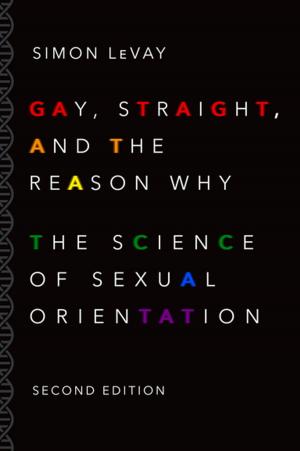The Cloning Sourcebook
Nonfiction, Science & Nature, Science, Biological Sciences, Biotechnology, Health & Well Being, Medical, Reference, Ethics, Religion & Spirituality, Philosophy, Ethics & Moral Philosophy| Author: | ISBN: | 9780190284541 | |
| Publisher: | Oxford University Press | Publication: | September 25, 2003 |
| Imprint: | Oxford University Press | Language: | English |
| Author: | |
| ISBN: | 9780190284541 |
| Publisher: | Oxford University Press |
| Publication: | September 25, 2003 |
| Imprint: | Oxford University Press |
| Language: | English |
Animal cloning has developed quickly since the birth of Dolly the sheep. Yet many of the first questions to be raised still need to be answered. What do Dolly and her fellow mouse, cow, pig, goat and monkey clones mean for science? And for society? Why do so many people respond so fearfully to cloning? What are the ethical issues raised by cloning animals, and in the future, humans? How are the makers of public policy coping with the stunning fact that an entire animal can be reconstructed from a single adult cell? And that humans might well be next? The Cloning Source Book addresses all of these questions in a way that is unique in the cloning literature, by grounding what is effectively an interdisciplinary conversation in solid science. In the first section of the book, the key scientists responsible for the early and crucial developments in cloning speak to us directly, and other scientists evaluate and comment on these developments. The second section explores the context of cloning and includes sociological, mythological, and historical perspectives on science, ethics, and policy. The authors also examine the media's treatment of the Dolly story and its aftermath, both in the United States and in Britain. The third section, on ethics, contains a broad range of papers written by some of the major commentators in the field. The fourth section addresses legal and policy issues. It features individual and collective contributions by those who have actually shaped public policy on reproductive cloning, therapeutic cloning, and similarly contentious bioethical issues in the United States, Britain, and the European Union. Animal cloning continues for agricultural and medicinal purposes, the latter in combination with transgenics. Human cloning for therapeutic purposes has recently been made legal in Britain. The goal is to produce an early embryo and then derive stem cells that are immunologically matched to the donor. Two human reproductive cloning projects have been announced, and there are almost certainly others about which we know nothing. Sooner or later a cloned human will be born. Many lessons can be learned from the cloning experience. Most importantly, there needs to be a public conversation about the permissible uses of new and morally murky technologies. Scientists, journalists, ethicists and policy makers all have roles to play, but cutting-edge science is everybody's business. The Cloning Sourcebook provides the tools required for us to participate in shaping our own futures.
Animal cloning has developed quickly since the birth of Dolly the sheep. Yet many of the first questions to be raised still need to be answered. What do Dolly and her fellow mouse, cow, pig, goat and monkey clones mean for science? And for society? Why do so many people respond so fearfully to cloning? What are the ethical issues raised by cloning animals, and in the future, humans? How are the makers of public policy coping with the stunning fact that an entire animal can be reconstructed from a single adult cell? And that humans might well be next? The Cloning Source Book addresses all of these questions in a way that is unique in the cloning literature, by grounding what is effectively an interdisciplinary conversation in solid science. In the first section of the book, the key scientists responsible for the early and crucial developments in cloning speak to us directly, and other scientists evaluate and comment on these developments. The second section explores the context of cloning and includes sociological, mythological, and historical perspectives on science, ethics, and policy. The authors also examine the media's treatment of the Dolly story and its aftermath, both in the United States and in Britain. The third section, on ethics, contains a broad range of papers written by some of the major commentators in the field. The fourth section addresses legal and policy issues. It features individual and collective contributions by those who have actually shaped public policy on reproductive cloning, therapeutic cloning, and similarly contentious bioethical issues in the United States, Britain, and the European Union. Animal cloning continues for agricultural and medicinal purposes, the latter in combination with transgenics. Human cloning for therapeutic purposes has recently been made legal in Britain. The goal is to produce an early embryo and then derive stem cells that are immunologically matched to the donor. Two human reproductive cloning projects have been announced, and there are almost certainly others about which we know nothing. Sooner or later a cloned human will be born. Many lessons can be learned from the cloning experience. Most importantly, there needs to be a public conversation about the permissible uses of new and morally murky technologies. Scientists, journalists, ethicists and policy makers all have roles to play, but cutting-edge science is everybody's business. The Cloning Sourcebook provides the tools required for us to participate in shaping our own futures.















